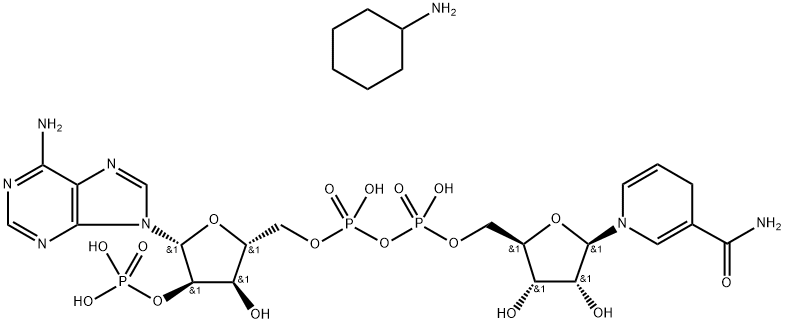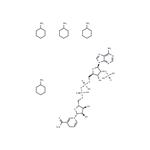Description
β-Nicotinamide adenine dinucleotide phosphate, reduced tetra(cyclohexylammonium) salt, is a pivotal cofactor in cellular metabolism, notably used in studying redox reactions where it functions as an electron carrier. In research, it is critical to probe the enzymatic mechanisms and kinetics of NADPH-dependent enzymes, essential for biosynthetic pathways, oxidative stress responses, and immune system functions. As a reduced form of NADP+, it serves as a substrate in assays to quantify the activity of dehydrogenases and reductases, providing insights into regulating metabolic processes. The tetra(cyclohexylammonium) salt form enhances solubility, facilitating its use in various in vitro experiments. Additionally, this compound is integral in photosynthetic research, particularly in studies focused on light-independent reactions where NADPH is consumed to reduce carbon dioxide to glucose.
Uses
β-Nicotinamide adenine dinucleotide 2′-phosphate (NADP+) and β-Nicotinamide adenine dinucleotide 2′-phosphate, reduced (NADPH) comprise a coenzyme redox pair (NADP+:NADPH) involved in a wide range of enzyme catalyzed oxidation reduction reactions. The NADP+/NADPH redox pair facilitates electron transfer in anabolic reactions such as lipid and cholesterol biosynthesis and fatty acyl chain elongation. The NADP+/NADPH redox pair is used in a variety of antioxidation mechanism where it protects agains reactive oxidation species accumulation. NADPH is generated in vivio by the pentose phosphate pathway (PPP).



